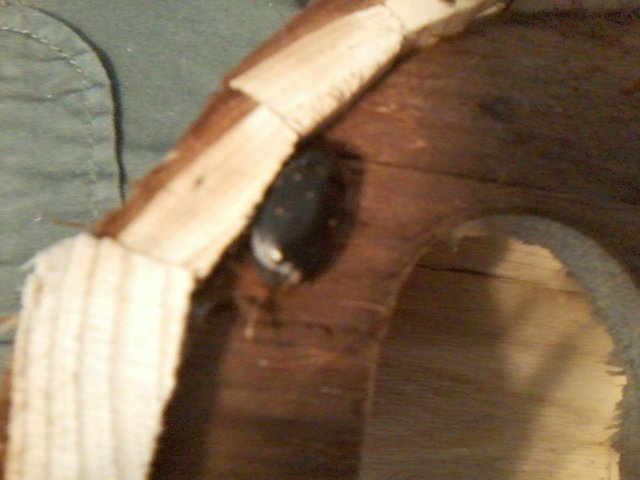Bugoodle
Pupa
Mikey, my Dyscinetus morator, has of some type of whitish-yellow crust growing on him. Up close it looks like little tiny egg cluster, but is more of a thin hard crust. It's on the back of his wings, his legs and some spots on his carapace. At first I thought another cage mate pooped on him or he got a little frisky with my harlequin flower beetle again. So I didn't bother cleaning him off, it'll come off and Mikey is a very shy little bug - until it got bigger and spreaded on other parts of him. I'm really worried. I just gave him a little bath, I was able to gently scrub the stuff off his back wings with a cotton swab and some warm water, but he just moved around too much so I couldn't get the rest. I let him paddle around in some luke warm water to work some off of his legs, that didn't do much though. My other insects who live with him(a harlequin flower beetle, a mimicking beetle roach, and a green june bug) do not have them. Mikey is wild caught, but I've had him for about a little over 3 months now and have never noticed this stuff. Is this some type of fungal infection or a parasitic egg? If so, please tell me how to treat him!
Despite this mess, this has no impact on Mikey's movement and behavior. He acts normal. To add, I've also been finding small spots of the same crust on the sides of the glass where Mikey hangs out at. I see nothing that could of contributed to this though.
I've also recently been finding some type of tiny white mites(I think they're mites. Mold mites?). They seem to be on their banana only in clusters though and I thought it was mold until it started moving! Is the crusty stuff on my rice beetle eggs of the mite?
Thanks for any help!
Despite this mess, this has no impact on Mikey's movement and behavior. He acts normal. To add, I've also been finding small spots of the same crust on the sides of the glass where Mikey hangs out at. I see nothing that could of contributed to this though.
I've also recently been finding some type of tiny white mites(I think they're mites. Mold mites?). They seem to be on their banana only in clusters though and I thought it was mold until it started moving! Is the crusty stuff on my rice beetle eggs of the mite?
Thanks for any help!
Last edited by a moderator:

